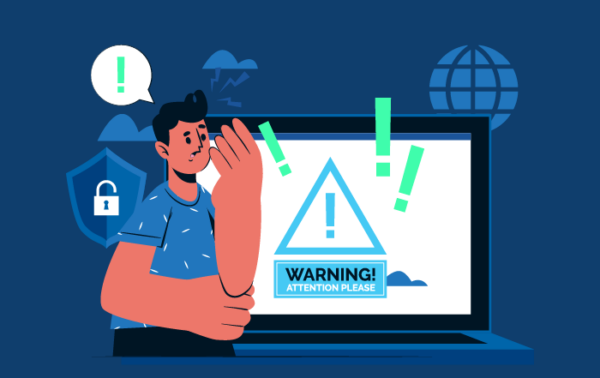How Fiber Optic Connectivity Transforms Operations
As industries evolve at an unprecedented pace, telecom providers stand at the forefront of this transformation, navigating the complexities of...

Network outages and disruptions are a fact of life in the interconnected world. When internet service goes down, it's not just an inconvenience – it can disrupt business, education, and personal lives. That's why incident response – the process of rapidly resolving network issues – is essential.
As networks – especially those serving rural areas – continue to grow, incident response needs to evolve and adapt. This means ensuring teams across your organization can communicate and collaborate despite increasing demands. For rural internet service providers, the stakes are even higher. Sprawling networks, often with limited resources, make rapid response harder. Delayed or fragmented responses can seriously impact customers, potentially turning minor issues into major headaches. This is where planning and tools built around collaboration make the difference between swift resolution and chaos.
For any network operator, smooth communication is essential during an incident. However, for rural internet service providers, the challenges can be magnified. Dispersed teams – field technicians, dispatchers, customer service, and network engineers – can find it difficult to coordinate without streamlined communication channels. This can delay critical information reaching the right people, potentially hindering resolution efforts. Additionally, without centralized visibility into network health, technicians might inadvertently spend time troubleshooting areas where others have already located the root cause. This dynamic is especially challenging for rural ISPs, where teams are often leaner. An influx of support tickets, phone calls, and unresolved issues can lead to longer wait times for both technicians and customers seeking answers. The goal is to empower teams to quickly identify the causes of incidents and restore service seamlessly for customers.
Successful incident response depends heavily on collaboration. Firstly, ensuring a shared understanding of the problem across all teams is vital. This avoids wasted time pursuing incorrect solutions or misinterpreting customer reports.
Next, a centralized knowledge base accessible to technicians, customer support, and network engineers is invaluable. This eliminates the need to reinvent the wheel, helps identify patterns, and promotes consistent troubleshooting methods.
Lastly, effective incident response requires smooth internal communication and coordination between teams. Clear handoff procedures, streamlined updates, and readily available escalation paths minimize delays in finding solutions and prevent bottlenecks. This type of cross-team collaboration is especially beneficial for rural ISPs, where teams may be smaller, and efficient use of resources is critical to maintaining a high standard of service.
Incident response success in modern networks hinges on choosing the right tools for the job. Internal messaging platforms designed specifically for technical teams encourage rapid information exchange and prevent important details from getting lost in generic email inboxes.
Likewise, automated ticket escalation systems ensure that complex issues are routed to the appropriate specialists without delays. Customizable email or SMS notifications further break down silos across teams, keeping everyone on the same page about issue status, resolution progress, and customer communications.
Network monitoring tools are invaluable, providing technicians with a centralized, real-time view of your network. Dashboards displaying customizable data, combined with intelligent alerting based on thresholds you set, can pinpoint the root cause of problems almost instantly.
Finally, the ability to send out targeted communications to customers specifically affected by an outage represents a leap forward in customer service. This proactive approach reduces inbound calls from worried customers, freeing up support staff and demonstrating transparency during service interruptions.
The positive impact of collaboration extends far beyond the day-to-day handling of incidents. By streamlining communication and information sharing, teams naturally become more efficient at finding solutions. This translates directly into reduced resolution times – getting services back online faster. This minimized downtime means increased customer satisfaction and a sense of responsiveness from their provider. This improves customer experience builds trust and loyalty. Proactive updates, made possible by collaboration, demonstrate a commitment to transparency and keep customers informed throughout the process.
Perhaps most importantly for rural ISPs, investing in collaborative tools sets the stage for scalability. As your network and customer base grow, processes built around shared information and seamless hand-offs will ensure continued efficiency. The ability to resolve issues quickly despite increasing complexity is the mark of a truly reliable and customer-focused provider.
The speed with which teams can communicate, share data, and coordinate their actions directly translates to how quickly service can be restored. This is especially true for rural ISPs, where resources might be scarcer but customer expectations remain just as high. Sonar understands this challenge. Our platform empowers ISPs with an integrated suite of communication, network visibility, and customer outreach tools.
As your network and customer base grow, Sonar grows with you, ensuring a consistent, high-quality experience for your customers regardless of scale. If you’d like to learn more about our incident response tools, click the link here! https://sonar.software/technical-networking-incident-response/

As industries evolve at an unprecedented pace, telecom providers stand at the forefront of this transformation, navigating the complexities of...

Automated network operations are reshaping how we manage and optimize networks. The landscape of network operations is currently experiencing a...

The imperatives of network security and resilience loom larger than ever for telecom providers. From the moment data enters the vast web of...